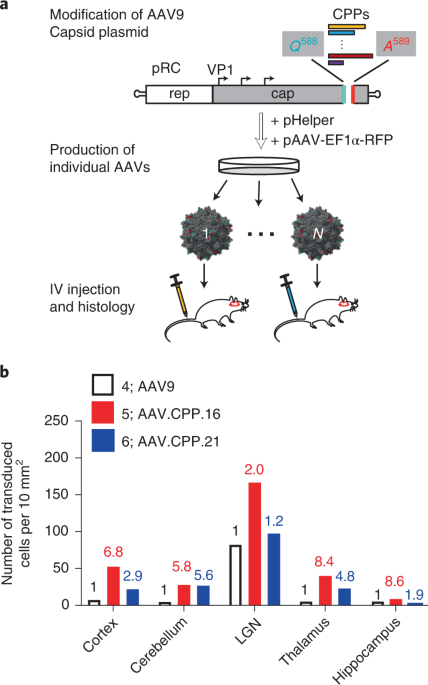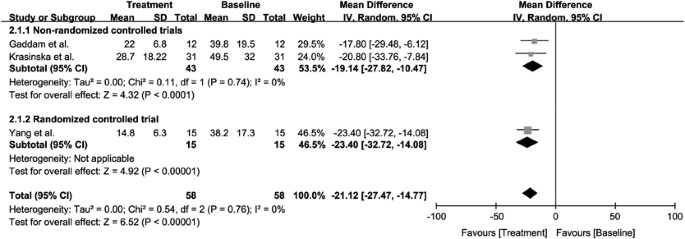
- Select a language for the TTS:
- UK English Female
- UK English Male
- US English Female
- US English Male
- Australian Female
- Australian Male
- Language selected: (auto detect) - EN
Play all audios:
Developing gene therapy for use in the central nervous system has been hampered by the lack of an efficient vector for gene delivery. We report an adeno-associated virus vector with an
enhanced ability to cross the blood–brain barrier in both rodents and non-human primates, and use it to develop systemic anti-tumour gene therapies for glioblastoma. Access through your
institution Buy or subscribe This is a preview of subscription content, access via your institution ACCESS OPTIONS Access through your institution Access Nature and 54 other Nature Portfolio
journals Get Nature+, our best-value online-access subscription $29.99 / 30 days cancel any time Learn more Subscribe to this journal Receive 12 digital issues and online access to articles
$119.00 per year only $9.92 per issue Learn more Buy this article * Purchase on SpringerLink * Instant access to full article PDF Buy now Prices may be subject to local taxes which are
calculated during checkout ADDITIONAL ACCESS OPTIONS: * Log in * Learn about institutional subscriptions * Read our FAQs * Contact customer support REFERENCES * Mendell, J. R. et al.
Single-dose gene-replacement therapy for spinal muscular atrophy. _N. Engl. J. Med._ 377, 1713–1722 (2017). AN ARTICLE THAT PRESENTS THE FIRST CLINICAL SUCCESS OF AAV9-MEDIATED GENE THERAPY.
Article CAS PubMed Google Scholar * Hudry, E. & Vandenberghe, L. H. Therapeutic AAV gene transfer to the nervous system: a clinical reality. _Neuron_ 101, 839–862 (2019). A REVIEW
ARTICLE THAT PRESENTS THE PROGRESS AND CHALLENGES OF CNS GENE DELIVERY USING AAV. Article CAS PubMed Google Scholar * Gray, S. J. The evolution of adeno-associated virus capsids for CNS
gene therapy. _Cell Gene Ther. Insights_ 5, 1361–1368 (2019). A REVIEW ARTICLE THAT PRESENTS THE LIMITATIONS OF CURRENT AAV CAPSIDS FOR CNS APPLICATION. Article Google Scholar * Sarkaria,
J. N. et al. Is the blood-brain barrier really disrupted in all glioblastomas? A critical assessment of existing clinical data. _Neuro. Oncol._ 20, 184–191 (2018). THIS REVIEW ARTICLE
PRESENTS EMERGING CLINICAL EVIDENCE OF THE CRITICAL ROLE OF THE BBB IN GLIOBLASTOMA TREATMENT. Article CAS PubMed Google Scholar * Goertsen, D. et al. AAV capsid variants with brain-wide
transgene expression and decreased liver targeting after intravenous delivery in mouse and marmoset. _Nat. Neurosci._ 25, 106–115 (2021). USING A DIRECTED REVOLUTION SCREENING METHOD, THIS
ARTICLE IDENTIFIES AAV CAPSIDS THAT PENETRATE THE BBB IN MICE AND MARMOSETS. Article PubMed Google Scholar Download references ADDITIONAL INFORMATION PUBLISHER’S NOTE Springer Nature
remains neutral with regard to jurisdictional claims in published maps and institutional affiliations. THIS IS A SUMMARY OF: Yao, Y. et al. Variants of the adeno-associated virus serotype 9
with enhanced penetration of the blood–brain barrier in rodents and primates. _Nat. Biomed. Eng_. https://doi.org/10.1038/s41551-022-00938-7 (2022). RIGHTS AND PERMISSIONS Reprints and
permissions ABOUT THIS ARTICLE CITE THIS ARTICLE An adeno-associated virus vector penetrates the blood–brain barrier in non-human primates. _Nat. Biomed. Eng_ 6, 1201–1202 (2022).
https://doi.org/10.1038/s41551-022-00939-6 Download citation * Published: 10 October 2022 * Issue Date: November 2022 * DOI: https://doi.org/10.1038/s41551-022-00939-6 SHARE THIS ARTICLE
Anyone you share the following link with will be able to read this content: Get shareable link Sorry, a shareable link is not currently available for this article. Copy to clipboard Provided
by the Springer Nature SharedIt content-sharing initiative







